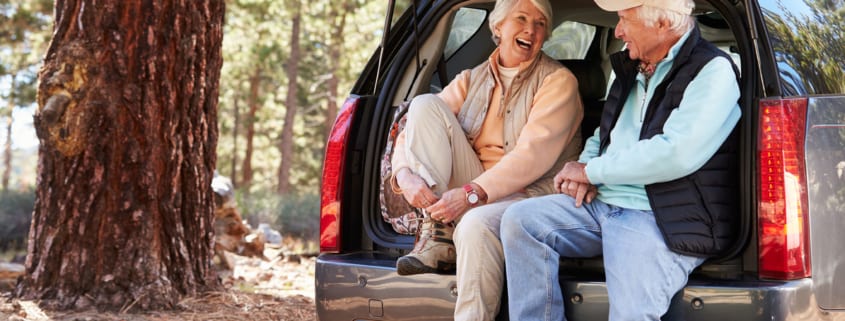On the Go Travel Tips
Enjoy a trouble-free transit with these travel tips.
If you’re traveling by airplane, car, bus, train, or cruise ship, you might be stressed about your ostomy needs during the trip. Don’t worry. With a little preparation, everything can go smoothly.
It’s also a good idea to start with short trips away from home to build up your confidence. Once you’re reassured that your pouching system stays secure during normal day-to-day activities, you can start to venture farther.
Here are a few tips to help you be fully prepared and comfortable, no matter how you travel.
Luggage weight limits: Are you traveling by air with a lot of supplies? Check with your airline and your country’s federal travel agency (e.g., the Transportation Security Administration in the United States) for the luggage weight limit. Weigh the luggage before you go. It may be helpful to use a portable luggage scale. If you’re over the limit, check to see if your airline has a special allowance for medical supplies.
Forbidden items: The International Air Transport Association (IATA) forbids dangerous items on board airplanes. For example, ether, methylated spirits, or flammable aerosol adhesives and removers are considered fire hazards. Scissors also may not be allowed in carry-on luggage – check with your airline or pre-cut all of your skin barriers before traveling.
Pre-boarding security checks: At airports, your carry-on luggage will be inspected at the security baggage check before boarding. If you have medications, get a card from your healthcare professional that explains why you need them. Some countries do not allow certain medications, such as codeine, to cross their borders. A travel communications card from an ostomy association in your country may also be available. United Ostomy Associations of America (UOAA) offers a travel card to help you be ready for searches or checkpoint questions.
Using airplane toilets: During a long flight, there can be long lines for toilets, especially after meals. Be alert for a chance to use the toilet when most people are in their seats. It’s also a good idea to request a seat near a toilet.
Car travel: Your car seat belt should sit across your hip bone and pelvis, not your abdomen and stoma. If you want to give your stoma extra protection from the strap, you can buy a seat belt pad. You can also use an extension bracket to lower the angle of the belt across your body.
Cruising with a stoma: Are you worried about taking a river, lake, or ocean cruise? Don’t be. If you’ll be away from land for a few days or more, just pack double the supplies you need. Plus, follow these simple precautions and you’ll have a trouble-free voyage.
View or print the full PDF booklet Living with an Ostomy: Travel from Hollister.com.
For similar articles on traveling with an ostomy and other topics, visit the Hollister Ostomy Care Learning Center.
Editor’s note: This educational article is from one of our digital sponsors, Hollister Incorporated. Sponsor support along with donations from readers like you help to maintain our website and the free trusted resources of UOAA, a 501(c)(3) nonprofit organization.












Leave a Reply
Want to join the discussion?Feel free to contribute!